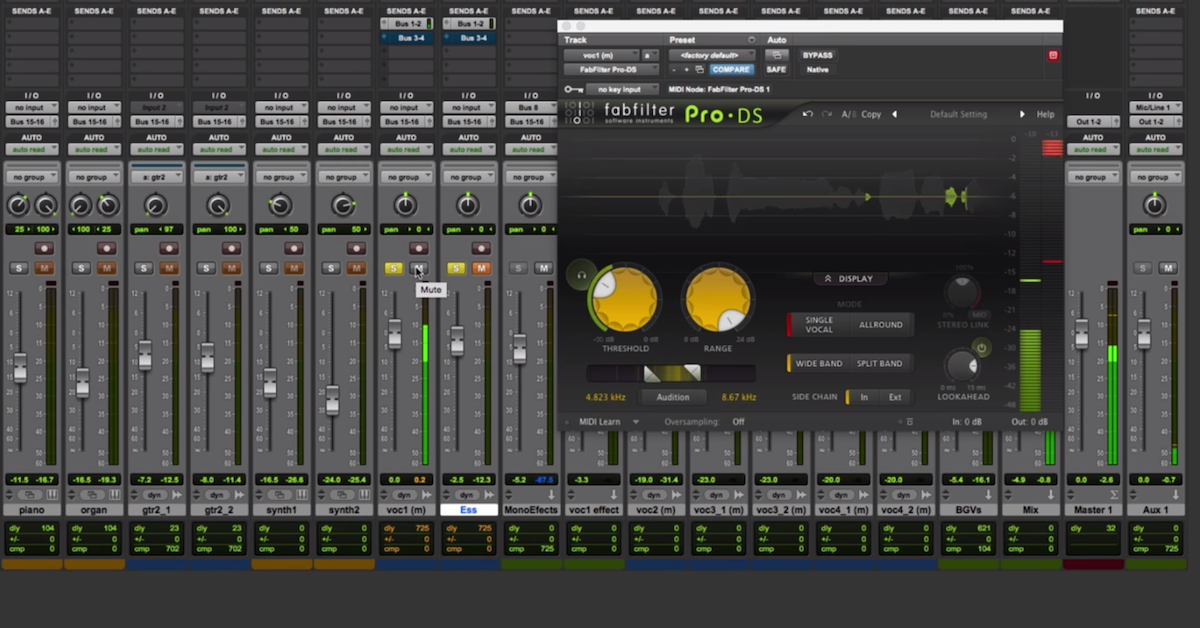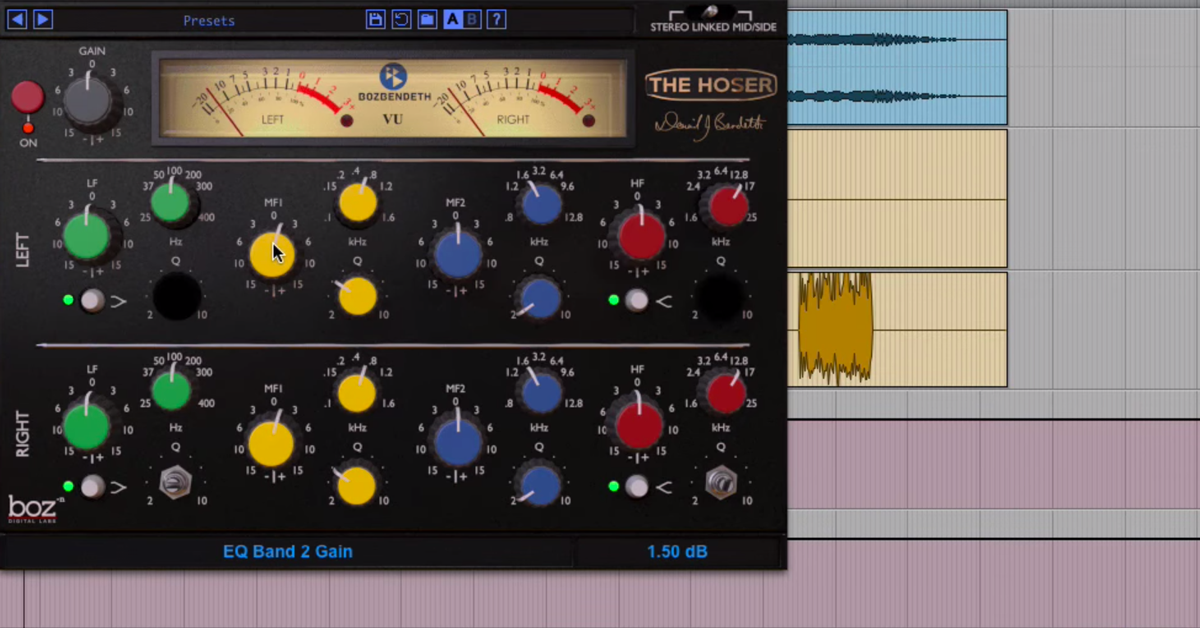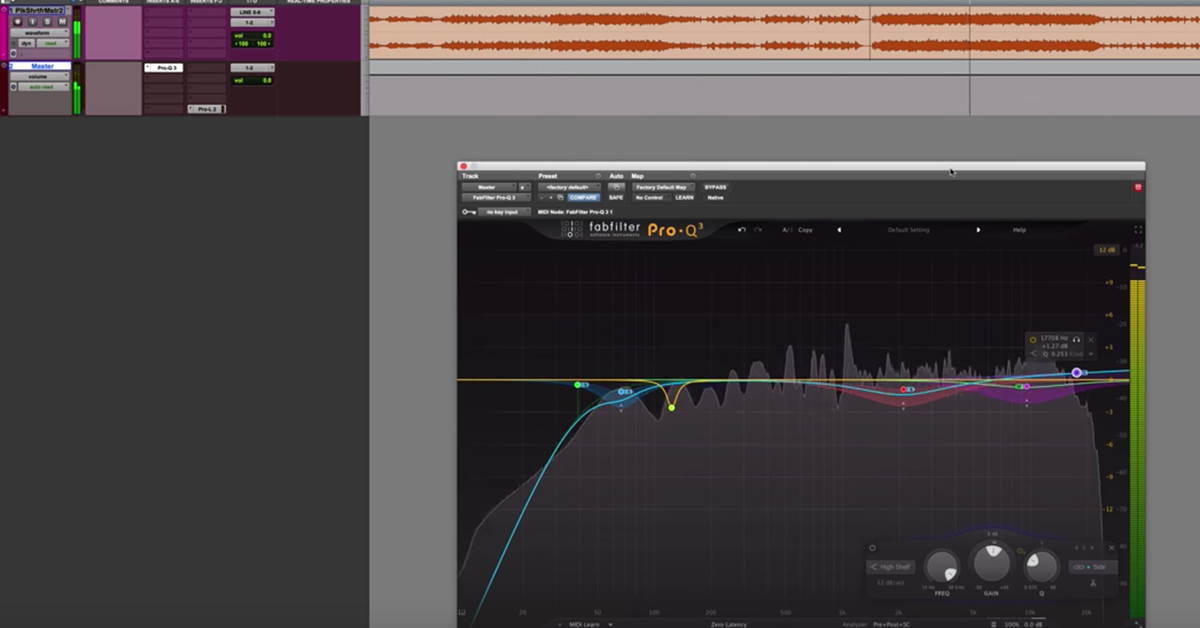5 Advanced EQ Techniques You Need to Know
Article Content
EQ is pretty simple, right? Crank a knob, hear the sound’s tone change?
Not quite. Just when you think you know everything there is to know about EQ, something new comes up. Here are a few advanced EQ techniques that you might not be using to full potential:
1. Mid/Side EQ
Any true stereo sound might be able to be enhanced with mid/side EQ.
Mid/side EQ basically turns your stereo EQ into a frequency-specific stereo width adjustment tool. You’ll get the most natural results by only processing the side channel. You can boost the top to increase clarity and dimension. You can narrow the mids to provide focus and punch. You can high-pass the bass to easily collapse the bass to mono without touching the mids and highs.
2. Spectral Matching EQ
This one’s usually a multi-step process.
First get the EQ to ‘listen’ to some reference audio (such as another track or commercial mixdown), then get the EQ to ‘listen’ to the audio you want to process. Finally, the EQ can then either match the two (so that the processed audio sounds similar to the reference audio), or it can compliment the two (so that the processed audio sounds very different to the reference audio).
Matching EQ can be useful whenever you want one track to sound like another. Obviously, this might be useful in mastering, but it can also come in handy when working with samples from a variety of different sources.
Compliment EQ can be useful if you want to make sure two tracks do not interfere with each other.
3. Dynamic EQ
This is an interesting one. It allows the gain of each EQ band to change dynamically with the level of the audio. It can work a lot like a multi-band compressor, except that the envelope follower controls the gain of an EQ band instead of a frequency range. This allows you to get much more surgical and specific with how the audio is processed.
The most common use of dynamic EQ is de-essing vocals, where the high frequencies are turned down when there’s too much sibilance. It’s also useful for other situations where a recorded track needs to be cleaned up in a specific way, but static EQ or broadband compression are too blunt for the job. Things like low frequency bumps or thuds, or the occasional odd midrange resonance are sometimes good opportunities to use dynamic EQ.
4. Parallel Processing with EQ
This is a good example of a more advanced pairing of EQ and compression. This technique works best with a naturally dynamic recording — such as a lead vocal or acoustic guitar. Duplicate the track and heavily compress one copy while leaving the other relatively dynamic. Balance the two so that the compressed track is dominant during quiet passages and the dynamic track is dominant during the loud passages. This opens up a lot of interesting possibilities when the two tracks have different EQ applied to them.
For example, you could make the dynamic track brighter and the compressed track darker. It will sound as if the recorded instrument itself gets brighter in the mix as it gets louder. Or make the compressed track warm and full-bodied, but reduce the lower frequency energy in the dynamic track. As the track gets louder, it thins out to make room for other instruments in the mix (which might also be getting louder), but stays warm and full during quieter parts where it’s more exposed.
5. EQ’ing Your Effects Returns
This is a good one. It’s especially useful for reverbs.
If you’re mixing in software, insert your favorite EQ after your reverb. If you’re mixing in hardware, bring your reverb back on a regular channel pair (not the less-featured stereo returns). Or patch a decent outboard EQ after the reverb before it comes back to the desk. Many reverbs have some in-board tone control, but it probably won’t be as flexible as your desk EQ or outboard EQ. This gives you much more power to shape the sound of your reverb and ambience at the back of the mix.
Happy with the reverb but it’s fighting a bit too much with the vocal? Give it a dip in the midrange. Want more focus in the low end of the slap bass while still retaining the ambience and space in the top? Bring in a gentle low shelf for a more natural cleanup than a low cut filter. Mix sounding a bit dead? Add some more dimension by gently boosting the top without upsetting the mix balance.
And this is just scratching the surface.
All in all, there’s a lot you can do with EQ. Much more than might be obvious at first. Give these techniques a try and you might just find a new secret weapon that’ll save your next mix.
[Editor’s note: If you want to rapidly improve your EQ skills, download Quiztones]





